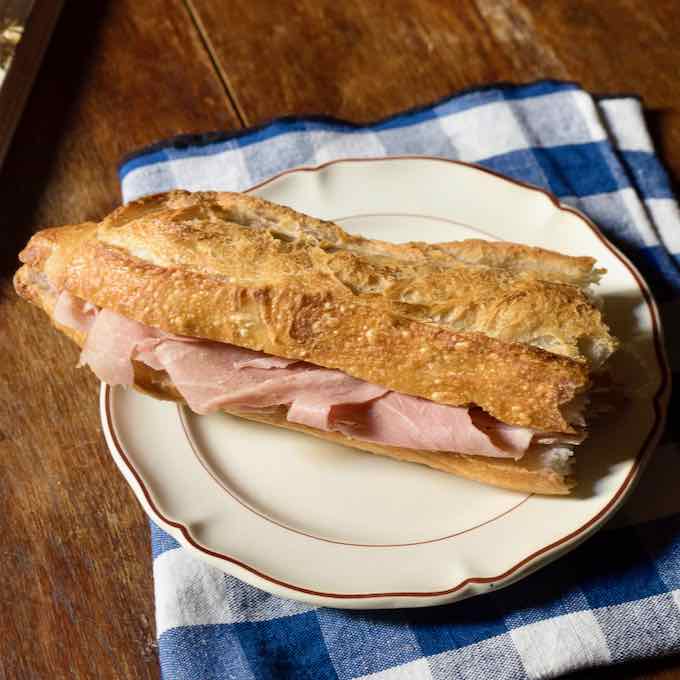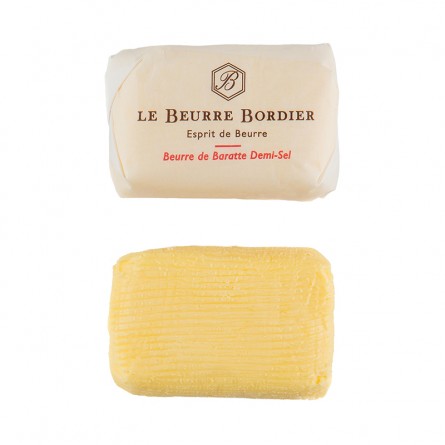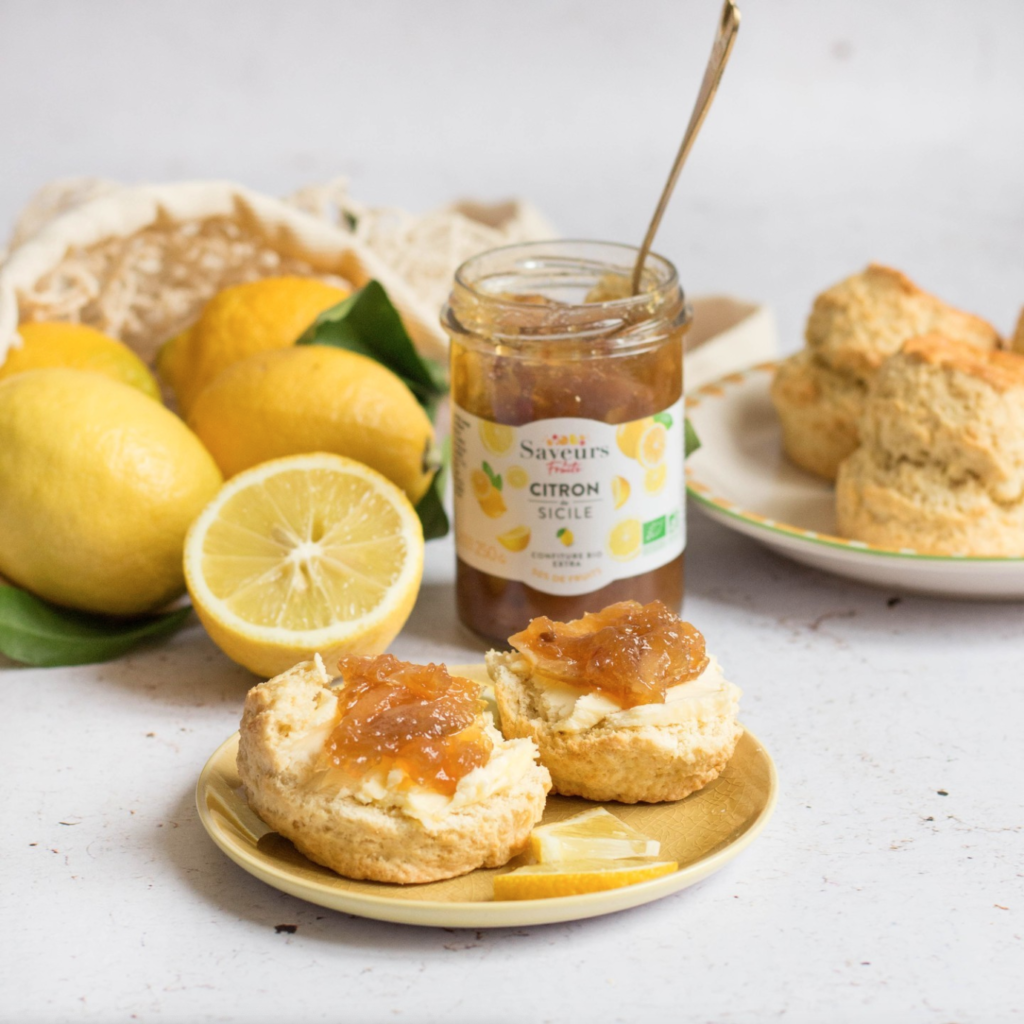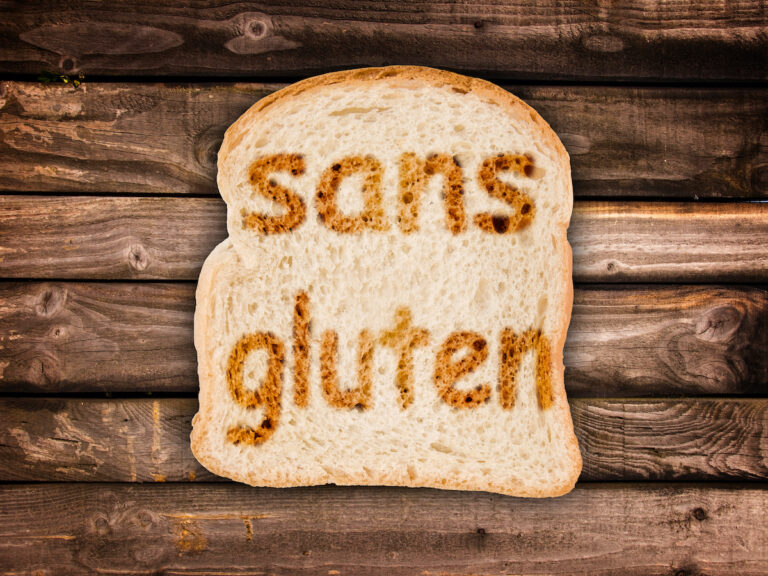Dozens of different agencies have a say in the regulations on edible products that can enter the US through customs and border control. So if you’re looking for one list on one US agency website of what can come into the States, cancel your plane ticket now and forget about all the goodies you were going to bring home to your friends.
The lists of admissible products are full of exceptions. There are, however, several rules that apply to all products: everything must be declared (or else pay fines up to $10,000), all poorly wrapped food products (whether they be fruits, veggies, seafood, processed food, or anything else) can be refused at customs, and everything must be transported in low enough quantities that you aren’t suspected of reselling goods in the US.
Here are a few examples in particular to help you with your French travels and to streamline things that you can bring back with you stateside.
French Food Products You Can Bring through US Customs:
- Moutarde de Dijon: totally allowed
- Baguette Jambon Beurre: YES!
- Butter, yes when frozen and well packaged
- A bottle of Château Margaux: come on through!
- Broth cubes and bags of pre-made soups: it depends
- Rocher Suchard chocolates: welcome to the USA!
- Camembert: yes, but…
- Absinthe: nope
- Foie gras: hopefully yes, but maybe no
- Kinder Surprise: unfortunately no
- Fresh Eggs: yes!
- Confiture: absolutely! even better if sugar-free!
1. Moutarde de Dijon: totally allowed
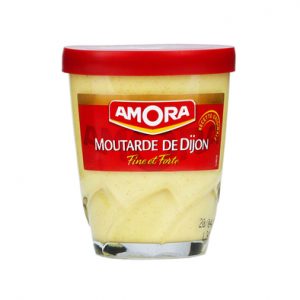
2. Baguette Jambon Beurre: YES!
When it comes to French bread, it’s sacred. You can bring croissants, baguettes, sandwiches, chaussons aux pommes, or any other carby delicacy that you crave both on the plane and in your checkin luggage. While these might not last long, they are a great snack that beats airplane food and might even last long enough for breakfast at home.
3. Butter, yes when frozen and well packaged
Butter isn’t necessarily on the TSA list, but it kind of fits between milk products and frozen products (both which are allowed.) And so, you are totally allowed to bring a Bordier (the best!) stick of butter for your toast at home. Consider keeping you butter with an ice pack or special packaging to keep it cold.
4. A bottle of Château Margaux: come on through!
As every good tourist (and French person knows), you’ve got to bring a bottle of French wine with you back from your travels in France. However, there are federal restrictions on this type of product. All travelers ages 21 and up can bring a liter of alcohol in their suitcases into the US without paying taxes (duty free, baby!). Any more than that, you’ll have to pay a tax particular to each alcohol. There’s no specific limit on the amount of delicious French vin and alcool you can bring into the US, but if customs see you arriving with the entire contents of your (future) wine cellar in your suitcase, they might suspect you of bringing it in to resell (which means no wine cellar for you). Additionally, alcoholic beverages with more than 24% but not more than 70% alcohol are limited in checked bags to 5 liters (1.3 gallons) per passenger and must be in unopened retail packaging.
5. Broth cubes and bags of pre-made soups: it depends

6. Rocher Suchard chocolates: welcome to the USA!

7. Camembert: yes, but…
With cheeses, it’s the consistency that makes the difference. Only hard, semi-soft, and pasteurized cheeses are allowed over US borders to live the American dream of being eaten on a Wheat Thin. Raclette, emmental, comté, brie, camembert are among those welcome, along with many other milk-based products like yogurt and butter. It’s those soft and runny cheeses like chèvre that are not allowed, or cheeses that contain any meat products in them.
8. Absinthe: nope
Even though most absinthe is at about 68% of alcohol per volume, technically below the TSA regulations, it is not allowed to be in your check-in or carryon luggage. Absinthe normally contains thujone— a chemical component of wormwood once thought to induce the hallucinations that gave the drink its notorious reputation, which is not allowed to be transported to the USA. However, if the absinthe says “thujone-free,” it might get a green light. Additionally, the term “absinthe” cannot be the brand name, stand alone on the label, and the artwork and/or graphics cannot project images of hallucinogenic, psychotropic or mind-altering effects. In simple terms, get your absinthe in the United States as it is now legally sold here as well, we’ve compiled a list for you.
9. Foie gras: hopefully yes, but maybe no
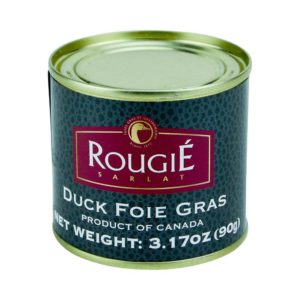
10. Kinder Surprise: unfortunately no
Even though chocolate is allowed, Kinder Surprise chocolates are prohibited because they contain small toys that are a choking hazard for children. (In 2015, 30,000 Kinder Surprise were confiscated by US customs.) A knock-off of Kinder Surprise called Kinder Joy came to the US in 2018. Kinder Joy contains two separately wrapped pieces of chocolate with a toy between them—the toy and the chocolate never touch (where’s the fun in that?!).
11. Fresh Eggs: yes!
You may not be able to bring through Kinder eggs, but you can bring fresh eggs both on board and put them in your check-in luggage (if you want an omelette in your suitcase afterwards.) If you, for some reason, love French eggs, feel free to bring them over to the states and make a cake.
12. Confiture: absolutely! even better if sugar-free!
While you can only bring about 100ml of jam on-board in your carry on, perfect for a few slices of toast, you can bring full quantities of jam in your checked luggage. This means you can bring Bonne Maman, or Saveurs et Fruits, or even your grandmother’s confiture back with you to the states. Enjoy the delicious treat back home. It also happens to be a lovely gift instead of touristy souvenirs.
And if not, you can give it all up and bring beautiful soaps and linens back with you without any customs worries at all.
Other products:
- Fruits and vegetables also have a few restrictions on them. The Department of Agriculture publishes detailed lists of items allowed in through customs, listed by country. Here is the list for France. Notably (and kind of unexpectedly) truffles and edible flowers are allowed in. Most of the restrictions on fruits and veggies have to do with which part (stem, flower, etc.) or form (seed, fruit, etc.) of the fruit or veggie you want to bring in. Even though it’s mostly all allowed, all fruits and vegetables entering the US must be clean and declared.
- Fish and seafood are authorized by quantity in all forms (fresh, frozen, cooked, smoked, preserved, or dried).
- Products with a base of uncooked eggs are not allowed. (Bummer about that mousse au chocolat you wanted to bring back!) But….you can bring back an intact egg–weirdly.
- Liquid milk is not allowed, except for kids in small amounts.
Where to look for more information?
- The US Customs and Border Protection (CBP) website
- The U.S. Department of Agriculture (USDA) website
- The French consulate put a detailed list of the allowed and banned products in the US on their website, but it’s dated February 2016 so things may have changed (and it’s in French)
Frequently Asked Questions – What can I bring back from France?
Can I bring foie gras to US from France?
You should be able to bring sealed cans of foie gras to the US, but a border agent may confiscate it depending on the situation.
What can I not bring to the US from France?
You cannot bring absinthe, Kinder Surprise chocolates, soft cheeses, and certain fruits and vegetables to the US from France.
Also Read:


